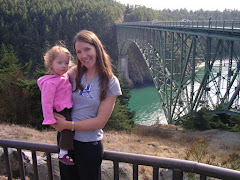Introduction
ANSWER Camp stands for Alaska Native Student Wisdom Enrichment Retreat. Alaska Native 7th and 8th grade students from rural locations all over the state are sent to Sitka for two weeks to participate in science and math curriculum taught from an Alaska Native perspective. The Southeast Regional Resource Center (SERRC) has funded ANSWER camp over the past 12 years through a U.S. Department of Education Grant. Now that the funding is no longer available, SERRC hopes to fund future camps through private industry. Although the funding for this summer is not enough to host a camp, we are hoping that we will be able to have camp next summer. I have been a teacher at ANSWER Camp for seven summers and participated in developing the curriculum for the camp during the winter months for four years. For my final project for this course, I would like to see the students host a community action meeting educating the public about global climate change and its impacts on Alaska Native peoples.
Objectives
- Students will use digital resources to conduct research and create a presentation on an Alaskan global climate change topic.
- Students will present and answer questions about their topic to community members.
- Students will create awareness within the community about the impacts of global climate change on Alaska and Alaska Native peoples.
Goals
- To create student and community awareness of the impacts of global climate change in Alaska.
- To create student and community awareness of the impacts of global climate change on Alaska Native people.
- To use digital resources in order to create a greater understanding and assist in student research of global climate change and its impacts on Alaska and its indigenous people.
Here in Alaska we are experiencing the affects of global climate change first hand. We are finding that Alaska Native people are the very first to notice the changes affecting their communities because of their deep connections to the land. They are noticing changes in our oceans, permafrost, sea ice, terrestrial ice and living organisms. What are these changes exactly, why are they happening, and what can we do about them? You will be calling the members of our community together to explore answers to these questions in a community action meeting sponsored by ANSWER Camp. Your job is to educate the community of the changes occurring in Alaska due to global climate change, how these changes impact Alaska Native people, and encourage action from them to help stop, slow down, or adapt to the changes occurring to our state.
Explore
Research one of the following topics in closer detail:
- Permafrost
- Sea Ice
- Terrestrial Ice
- Alaskan living organisms
Here are some possible links to resources that will aid in your research:
Permafrost
http://en.wikipedia.org/wiki/Permafrost
http://en.wikipedia.org/wiki/Active_layer
http://www.teachersdomain.org/resource/ean08.sci.ess.earthsys.permafrost/
http://www.arctic.noaa.gov/essay_romanovsky.html
http://www.arctic.noaa.gov/gallery_permafrost.html
http://www.youtube.com/watch?v=-l0JdVtmNus
http://www.youtube.com/watch?v=RmuuIvXhIbs&NR=1
http://www.youtube.com/watch?v=nOe1G_3jYak&NR=1
http://www.youtube.com/watch?v=vSLHvZnbYwc
http://www.youtube.com/watch?v=FNyy8SlrY4k&feature=related
http://www.teachersdomain.org/resource/ipy07.sci.ess.earthsys.arcticland/
http://www.teachersdomain.org/resource/ean08.sci.ess.watcyc.bakedalaska/
Sea Ice
http://en.wikipedia.org/wiki/Sea_ice
http://en.wikipedia.org/wiki/Albedo
http://www.teachersdomain.org/resource/ipy07.sci.ess.watcyc.cryoarctic/
http://www.teachersdomain.org/resource/ean08.sci.ess.earthsys.climatesys/
http://www.teachersdomain.org/resource/ean08.sci.life.eco.arctichange/
http://www.teachersdomain.org/resource/ipy07.sci.ess.watcyc.albedo/
http://www.teachersdomain.org/resource/ipy07.sci.ess.eiu.nasadata/
http://www.nasa.gov/topics/earth/features/seaicemin09.html
http://www.teachersdomain.org/resource/ean08.sci.ess.watcyc.shishmaref/
http://www.teachersdomain.org/resource/echo07.sci.life.coast.climate/
http://www.teachersdomain.org/resource/ean08.sci.ess.earthsys.hunting/
http://www.teachersdomain.org/resource/ean08.sci.ess.earthsys.maclean/
Terrestrial Ice
http://en.wikipedia.org/wiki/Ice_shelf
http://en.wikipedia.org/wiki/Antarctic_Bottom_Water
http://www.coolantarctica.com/Antarctica%20fact%20file/antarctica%20environment/climate_graph/climate_weather.htm
http://en.wikipedia.org/wiki/Thermohaline_circulation
http://www.usgs.gov/global_change/glaciers/water_on_earth.asp
http://www.usgs.gov/global_change/glaciers/intro_glaciers.asp
http://www.teachersdomain.org/resource/ipy07.sci.ess.watcyc.cryoantarctica/
http://www.teachersdomain.org/resource/ess05.sci.ess.watcyc.climatechange/
http://www.teachersdomain.org/resource/tdc02.sci.life.eco.earthstemp/
http://www.teachersdomain.org/resource/ess05.sci.ess.earthsys.esglaciers/
http://www.teachersdomain.org/resource/ipy07.sci.ess.earthsys.glacierphoto/
http://www.teachersdomain.org/resource/ipy07.sci.ess.watcyc.fastglacier/
http://www.extremeicesurvey.org/index.php/see_our_cameras/mendenhall_glacier__alaska/
http://www.teachersdomain.org/resource/ess05.sci.ess.watcyc.icemelt/
http://www.usgs.gov/global_change/glaciers/glaciers_sea_level.asp
http://en.wikipedia.org/wiki/History_of_the_Tlingit
http://www.youtube.com/watch?v=2-OUMDBOSAo
Alaskan living organisms
http://www.worldviewofglobalwarming.org/pages/alaska.html
http://www.eoearth.org/article/Impacts_of_global_warming_in_Alaska
http://www.teachersdomain.org/resource/ean08.sci.life.eco.athabaskan/
http://www.teachersdomain.org/resource/lsps07.sci.life.eco.polarbear/
http://www.teachersdomain.org/resource/ean08.sci.life.eco.arctichange/
http://www.teachersdomain.org/resource/ipy07.sci.life.eco.arcticecosys/
http://www.teachersdomain.org/resource/ean08.sci.ess.earthsys.microbe/
http://www.teachersdomain.org/resource/ean08.sci.life.eco.foodfish/
http://www.electric-cars-are-for-girls.com/effects-of-global-warming.html
Explain
Complete the following prompts and questions after exploring your topic:
1. Briefly define your topic.
2. Why is your topic important to the health of the ecosystems within Alaska?
3. How is your topic changing due to global climate change?
4. How are those changes impacting Alaskan ecosystems?
5. What are some ways Alaskans can stop, slow down, or adapt to these changes?
6. Discuss two examples of how Alaska Native cultures are connected to your topic.
7. Cite the resources you used in your research?
Extend
Create a 3-paneled display, power point presentation, or I-movie displaying the information gathered about your topic to be shared at the Community Action Meeting. You will be presenting your information and answering questions about your topic to community members as they visit each display or presentation.
Evaluate
Prior to the day of the actual presentations to the community, you will have a chance to assess and be assessed by your peers. Additional time will be given to make changes according to the feedback given. You will use the following rubric to assess three different presentations:

After the Community Action Meeting, reflect on the following:What digital resource (e.g. Google Earth, YouTube, specific websites, etc.) that you used to gain information about your topic was the most useful? Why or why not?




